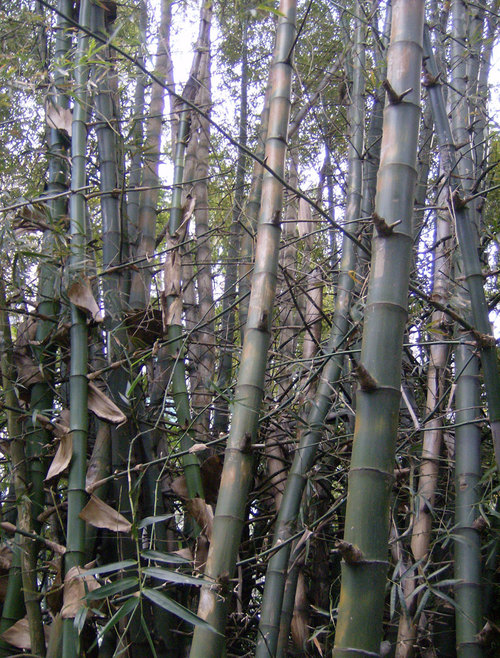See. http://aciar.gov.au/files/node/10532/PR129%20Part%202.pdf
A plant of the lowland tropics, where it is found at elevations up to 300 metres. It grows best in areas where annual daytime temperatures are within the range 18 – 32°c, but can tolerate 8 – 37°c. Tolerates flooding along rivers.Smaller than Bambusa Bambos..It prefers a mean annual rainfall in the range 1,500 – 4,000mm, but tolerates 1,000 – 5,000mm.
Plants grow best on heavier, fertile soils. Intolerant of saline soils. Tolerant of occasional inundation of the soil[. Prefers a pH in the range 5 – 6.5, tolerating 4.5 – 7.
Planted culm cuttings at first send up thin shoots and culms are produced only after about 3 years. The number and size of the culms produced increases yearly until the clump reaches maturity. A planted cutting develops into a harvestable clump in 6 – 8 years. A mature clump (containing 10 – 40 culms may develop about 30 shoots per year of which only about one-third to one-fourth reaches maturity because of diseases and pests, wind damage, and shortage of water and nutrients. New shoots emerge during the rainy season and can be harvested for food after 7 – 15 days.
Harvesting. For handicraft purposes, 1-year-old culms can be taken. For construction purposes, 3-year-old culms are suitable. Culms are cut 2 – 3 metres above the ground, just above the dense growth of spiny branches. The remaining basal portion should be cut back close to the ground within 6 months of the harvest. In order to ensure sustained yield, the number of culms that can be cut annually should not exceed 60% of the standing mature culms in the clump.
Culms: Bambusa blumeana is a thorny bamboo with slightly arching green culms of 15-25 m tall. The internodes are 25-35 cm long, with 8-15 cm in diameter and an average wall thickness of 2-3 cm. At the base of the culms, wall thickness is mostly solid, especially in dry areas or poor soils. Lower culm nodes show a ring of aerial roots, with a gray or brown ring below and above the sheath scar.
Branches: Branches usually occur from the middle of the culm to the top, and have several to many clustered branches with 1-3 larger dominant branches that are markedly longer and thicker. Branches from the lower nodes are solitaire and densely interwoven with tough, sharp, curved thorns.
Leaves: Leaves are lance-shaped and on average 10-20 cm long and 12-25 mm wide.
Types of pruning include: pinching, thinning, shearing and rejuvenating.
Pinching is removing the stem tips of a young plant to promote branching. Doing this avoids the need for more severe pruning later on.
Thinning involves removing whole branches back to the trunk. This may be done to open up the interior of a plant to let more light in and to increase air circulation that can cut down on plant disease. The best way to begin thinning is to begin by removing dead or diseased wood.
Shearing is leveling the surface of a shrub using hand or electric shears. This is done to maintain the desired shape of a hedge or topiary.
Rejuvenating is removal of old branches or the overall reduction of the size of a shrub to restore its original form and size. It is recommended that you do not remove more than one third of a plant at a time. Remember to remove branches from the inside of the plant as well as the outside. When rejuvenating plants with canes, such as nandina, cut back canes at various heights so that plant will have a more natural look.
Native to India and Indonesia where it is eaten, woven into baskets and used for building. This tall bamboo also grows thorns. Clump bamboos have underground stems that sprout vertical shoots much closer to their parent plants, growing slowly outward.

Barbarugo has planted Blumeana in Assin Kwaata and in Kpanshiegu and many other places as fence to protect the young bamboo against goats and cows….

…
…
..
..
..
